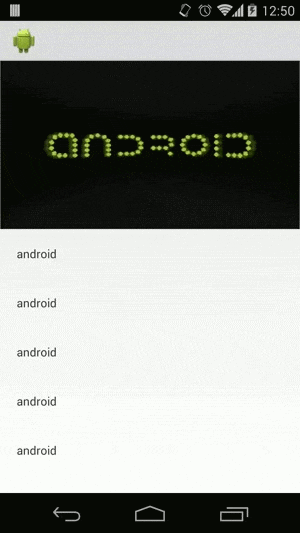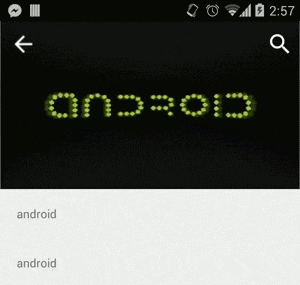Download
Step 1. Add the JitPack repository to your build file
Add it in your root settings.gradle at the end of repositories:
dependencyResolutionManagement {
repositoriesMode.set(RepositoriesMode.FAIL_ON_PROJECT_REPOS)
repositories {
mavenCentral()
maven { url 'https://jitpack.io' }
}
}Add it in your settings.gradle.kts at the end of repositories:
dependencyResolutionManagement {
repositoriesMode.set(RepositoriesMode.FAIL_ON_PROJECT_REPOS)
repositories {
mavenCentral()
maven { url = uri("https://jitpack.io") }
}
}Add to pom.xml
<repositories>
<repository>
<id>jitpack.io</id>
<url>https://jitpack.io</url>
</repository>
</repositories>Add it in your build.sbt at the end of resolvers:
resolvers += "jitpack" at "https://jitpack.io"
Add it in your project.clj at the end of repositories:
:repositories [["jitpack" "https://jitpack.io"]]
Step 2. Add the dependency
dependencies {
implementation 'com.github.Fedorkz:android-parallax-recyclerview:v1.14'
} dependencies {
implementation("com.github.Fedorkz:android-parallax-recyclerview:v1.14")
} <dependency>
<groupId>com.github.Fedorkz</groupId>
<artifactId>android-parallax-recyclerview</artifactId>
<version>v1.14</version>
</dependency>
libraryDependencies += "com.github.Fedorkz" % "android-parallax-recyclerview" % "v1.14"
:dependencies [[com.github.Fedorkz/android-parallax-recyclerview "v1.14"]]
Readme
android-parallax-recycleview
Integration
Step 1. Add the JitPack repository to your build file
repositories {
maven {
url "https://jitpack.io"
}
}
Step 2. Add the dependency
dependencies {
compile 'com.github.kanytu:android-parallax-recyclerview:v1.7'
}
USAGE
(Example project - https://github.com/kanytu/example-parallaxrecycler)
- Create your object list and pass it to the constructor of
ParallaxRecyclerAdapter
List<String> myContent = new ArrayList<String>(); // or another object list
ParallaxRecyclerAdapter<String> adapter = new ParallaxRecyclerAdapter<String>(content) {
@Override
public void onBindViewHolderImpl(RecyclerView.ViewHolder viewHolder, ParallaxRecyclerAdapter<String> adapter, int i) {
// If you're using your custom handler (as you should of course)
// you need to cast viewHolder to it.
((MyCustomViewHolder) viewHolder).textView.setText(myContent.get(i)); // your bind holder routine.
}
@Override
public RecyclerView.ViewHolder onCreateViewHolderImpl(ViewGroup viewGroup, final ParallaxRecyclerAdapter<String> adapter, int i) {
// Here is where you inflate your row and pass it to the constructor of your ViewHolder
return new MyCustomViewHolder(LayoutInflater.from(viewGroup.getContext()).inflate(R.layout.myRow, viewGroup, false));
}
@Override
public int getItemCountImpl(ParallaxRecyclerAdapter<String> adapter) {
// return the content of your array
return myContent.size();
}
};
- Now we set the parallax header. You need to pass the
RecyclerViewtoo to implement the scroll listeners.
myAdapter.setParallaxHeader(LayoutInflater.from(this).inflate(
R.layout.myParallaxView, myRecycler, false), myRecyclerView);
There a few other listeners you can implement:
// Event triggered when you click on a item of the adapter.
void onClick(View v, int position);
// Event triggered when the parallax is being scrolled.
void onParallaxScroll(float percentage, float offset, View parallax);
RESULT

VIEW TYPES You can use your view type within interval from [0 to INT_MAX-1]
COOL EFFECTS YOU CAN DO WITH THIS LIBRARY
- Transparent toolbar effect
@Override
public void onParallaxScroll(float percentage, float offset, View parallax) {
Drawable c = mToolbar.getBackground();
c.setAlpha(Math.round(percentage * 255));
mToolbar.setBackground(c);
}

License
Copyright (c) 2014 Pedro Oliveira
Licensed under the Apache License, Version 2.0
